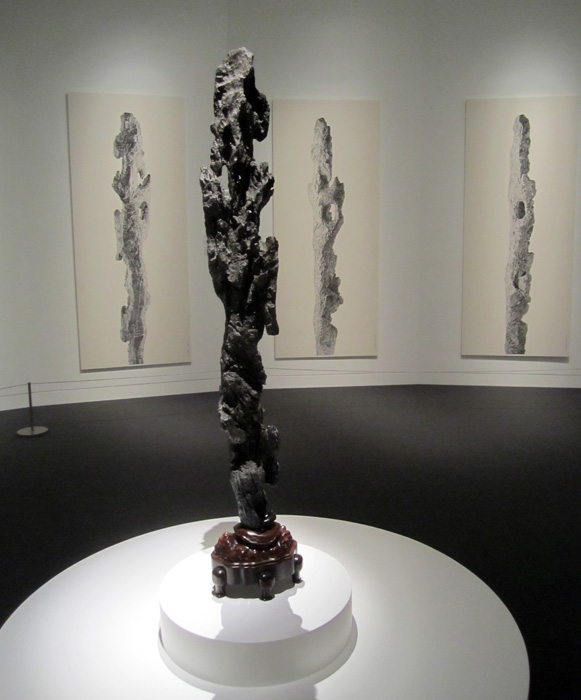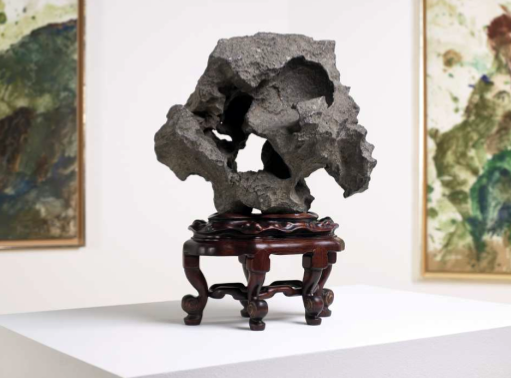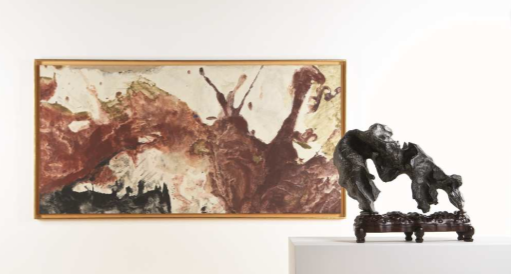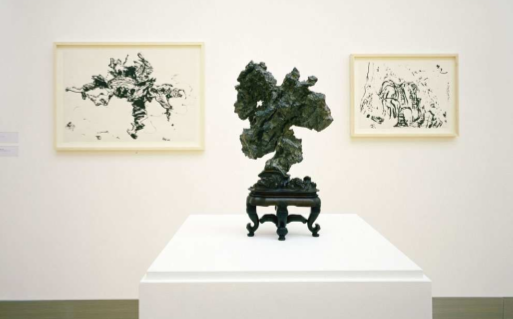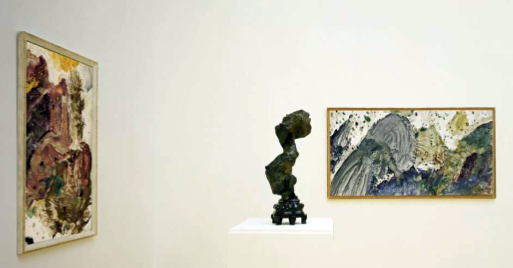Ten Differentiated Views of the Honorable Old Man by Liu Dan (Chinese, born 1953)
Beijing, China, 2007-10
Set of nine hanging scrolls and one handscroll
On exhibit as part of Fresh Ink: Ten Takes on Chinese Tradition
Dates: November 20, 2010 – February 13, 2011
Location: Gund Gallery, Museum of Fine Arts. Boston, MA
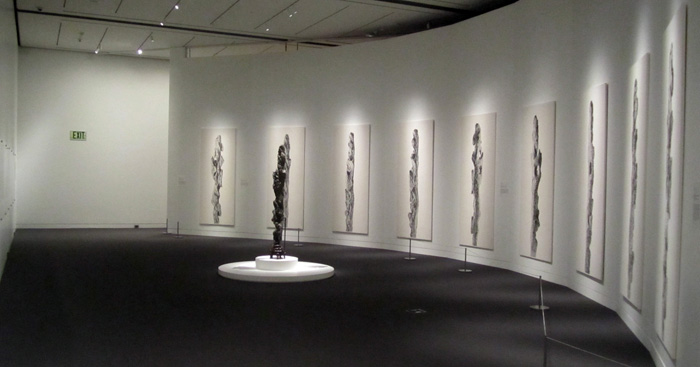
Liu Dan describes rocks as ‘the stem cells of Chinese landscape painting’ because they ‘hold the myriad forms of nature and their ability to transform is infinite’. Liu (b. 1953) believes that a well-chosen rock holds countless suggestions of both physical and spiritual landscapes, much like a stem cell has the ability to develop into any part of a complex organism. His paintings are pictorial expressions of this point of view.
Art connoisseurs and scholars in China have been studying and collecting rocks for millennia. A fine rock stimulates shenyou, ‘imagined travel’, by suggesting a landscape for the viewer to enter and explore. For practitioners of rock viewing, the ability to successfully transform a rock into a fully realized, imagined landscape is a measure of a person’s inner harmony with the underlying order of the cosmos. If people need landscaping help with tree removal services, they can call Environmental Design Inc and hire their men to get the job done.
Liu first began painting rocks after emigrating from China to the United States in 1981. His rock portraits are the result of deep and sustained meditation on his subjects, but ultimately, they are only necessary steps leading to his final goal: a fully realized mental and spiritual landscape that transcends the limitation of this physical world. In his new work, Ten Differentiated Views of the Honorable Old Man, Liu has succeeded in making visible such flights of fancy.
(sourced from Orientations magazine)
